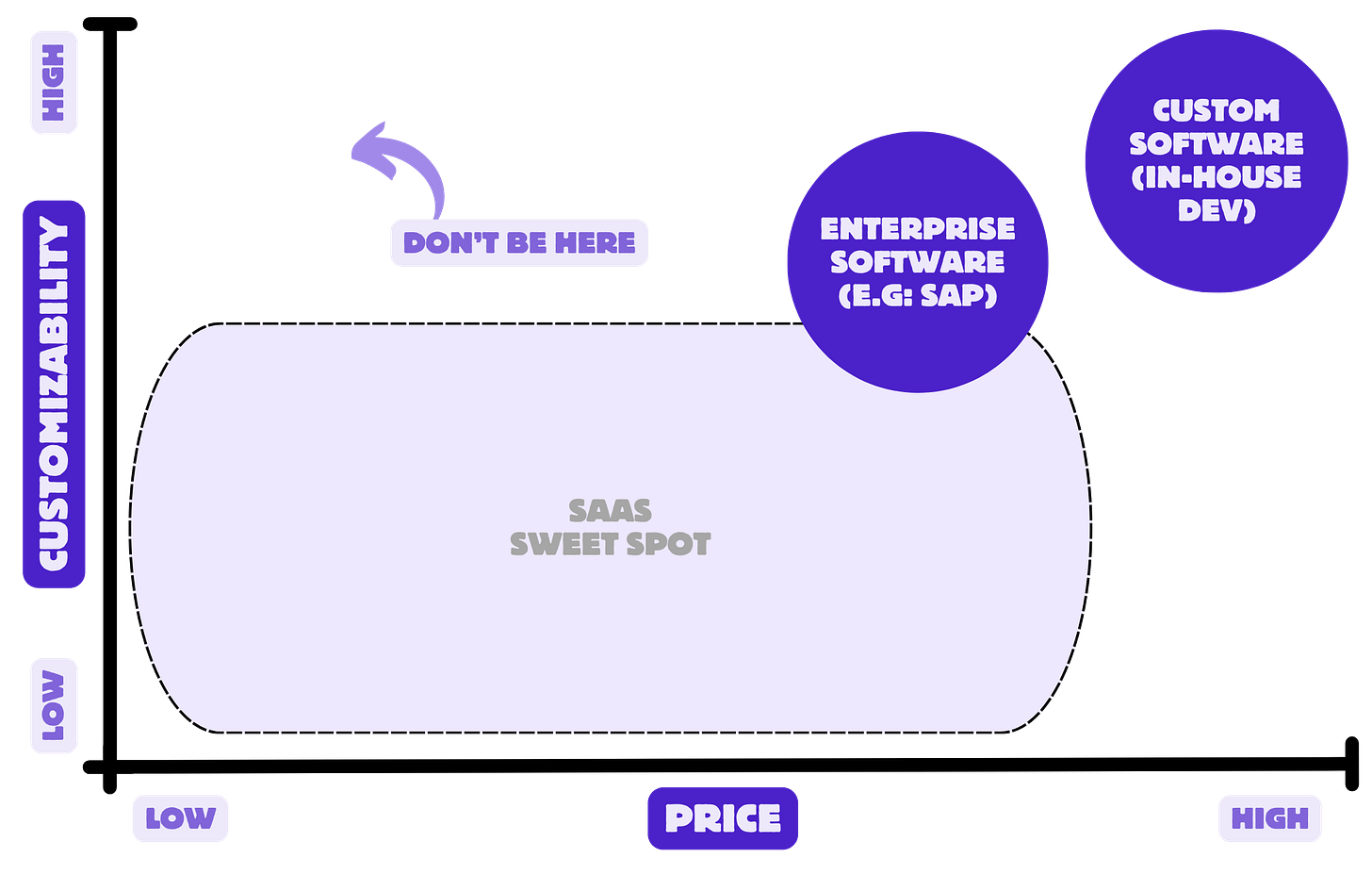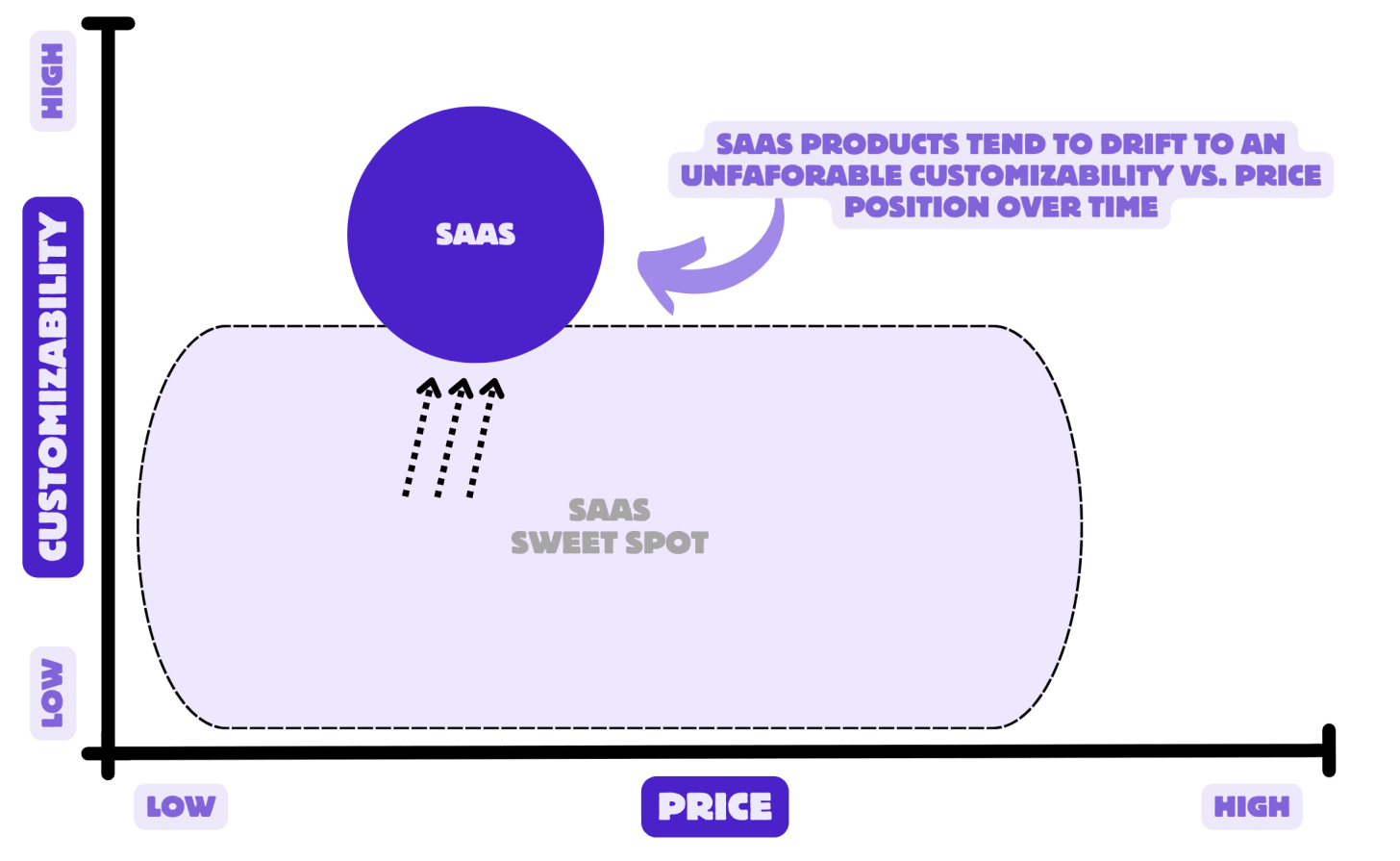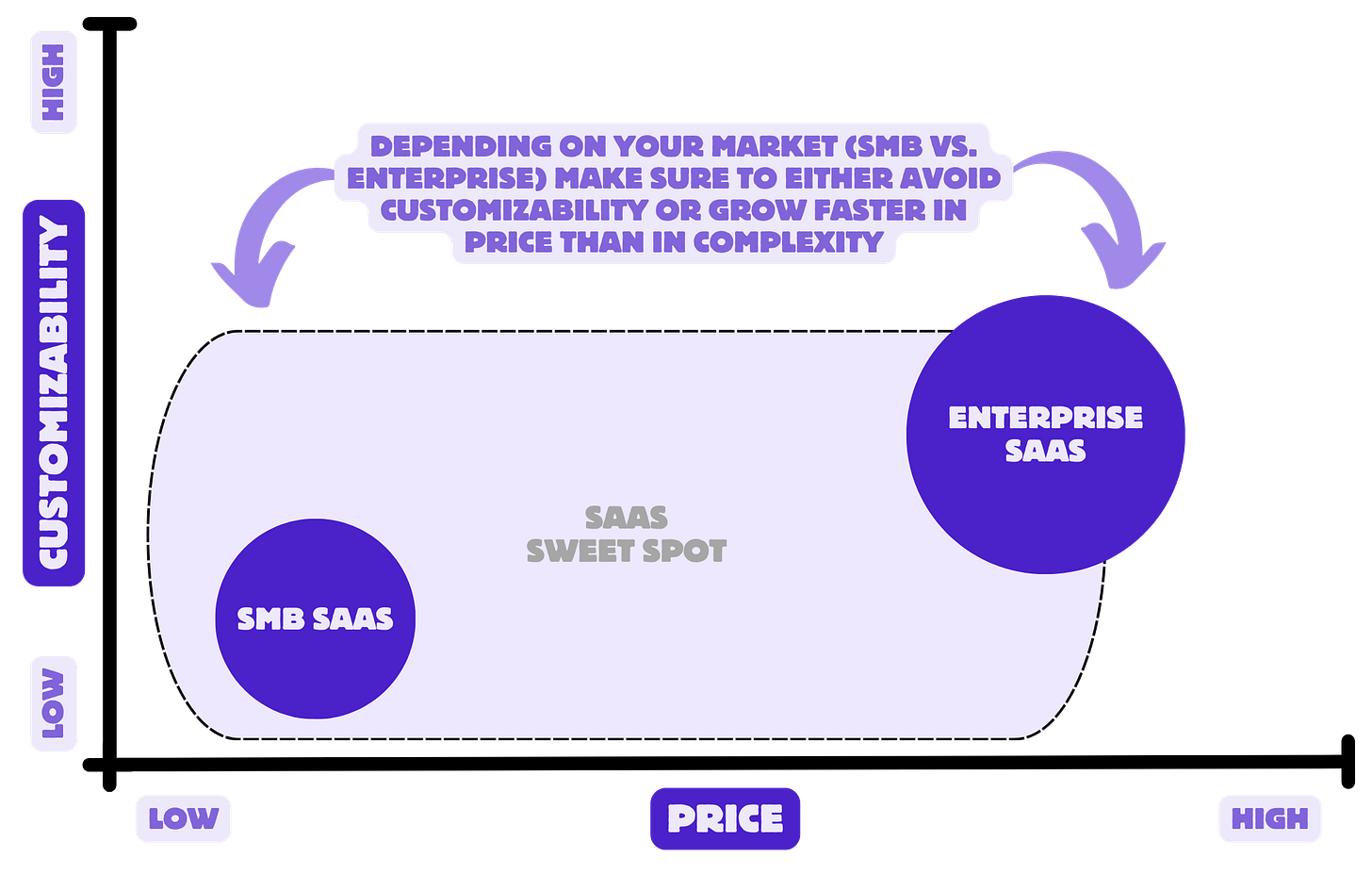Customization is the process of tailoring products or services to the specific needs of a customer. It’s like having a suit tailored to fit you perfectly. Standardization on the other hand means presenting the customer with a ready-made product that does not change to their specifics (or only very little). Think of it as buying a suit off the rack.
Where should your SaaS product be on this scale? I will argue that in most cases it is wise to avoid customizability, as it makes products complicated and expensive.
How products usually become configuration nightmares
More often than not the longer a product exists, especially in B2B, the more complex the settings page of that product becomes. At one point the settings page for many B2B SaaS products is a tool for building a custom product for every customer. But if customization can be dangerous, why do most companies default to it?
Usually, it results from customers pressuring for a middle-ground solution and product managers not standing their ground when asked: “Can we please build this for customer XYZ?”
Consider the following scenario:
Customer Success: “This important enterprise customer XYZ just demanded that we build this feature or they will churn”.
Product: “But this is not what our product is supposed to do, this will make the experience much more complex for everyone else.”
Customer Success: “I can try my best to get them off the idea, but they are pretty much set. Most likely they will escalate to leadership.”
CxO: “Hi I got a call from XYZ, they said they feel like we are not listening to their requests anymore. Could you please prioritize their request?”
Product: “It’s not that we are not prioritizing it, we do not want to build their request, it would hurt our product more than it helps.”
CxO: “Can’t we just add a setting somewhere to hide it for the rest of the customers and still fulfill their request? We really can’t afford to lose them as a client”.
… the rest is history, but in many cases, the result of a conversation like this is a setting to accommodate this customer and simultaneously not complicate the product for everyone else.
This usually happens in B2B businesses much more often than once. Slowly but surely the product can be customized more & more and setting up the product can become a nightmare. In cases like SAP or Salesforce.com, it needs specialized developers or implementation consultants to configure the product to get started.
Is it that bad to be Salesforce.com or SAP?
SAP made 31 billion in revenue in 2023 and SFDC (salesforce.com) made 35. Both companies don’t just turn over more than 30 billion annually they also are very profitable. (Compared to most SaaS companies that are not). I would argue this is pretty desirable for most software businesses.
So why should other SaaS companies not strive for a similar business model if this one is so extremely successful?
The main reason is: If you work in a smaller software company than SAP or SFCD (which is quite likely) you will probably try to solve a specific problem for a narrow customer. Customization usually helps to open up to a wider audience but makes it more complicated for the initial audience to solve their problem. In most cases solving something very well for your ICP (Ideal Customer Profile) will lead to becoming a successful company as it helps to grow efficiently within a market.
SMB
If your ICP is small & medium businesses it most likely means your product is sold to them relatively cheaply. Tagging on (tens of) thousands in implementation and consulting fees to get started is not a great selling point for this audience, so customizability should be minimal.
Enterprise
If your ICP is larger companies or enterprises you will most likely get away with some more customizability as the product can be more expensive. (Which allows you to charge consulting and implementation efforts when getting started) Yet I would argue it is not wise to overdo it as adoption within a large enterprise will suffer if your product is too complicated. (And most likely they have switched to you from a legacy software product that was more complicated)
As a rule of thumb, you should grow much faster in price than in complexity.
Conclusion
In conclusion, while customization can be a quick fix in many situations, simplicity should be the default for most companies. Remember, a simple product is easier to use and cheaper to maintain & scale. For those serving small to medium businesses, minimal customization avoids overwhelming your core users with complexity and unnecessary costs. While larger enterprises might demand a bit more customizability, they will appreciate straightforward, efficient solutions over a maze of configurations.
So, keep it simple, focus on what your customer truly needs, and grow without overcomplicating your product.
VERSUS Series
The VERSUS series is a set of 8 newsletter articles (2 per week) that answer questions PMs ask themselves all the time. Check out the other articles below!







